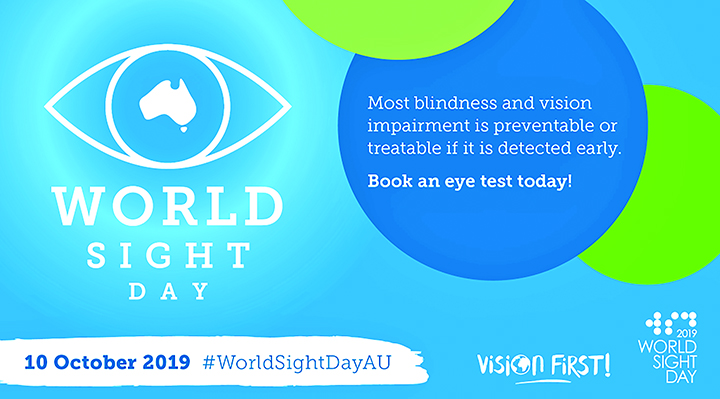The World Sight Day, observed annually on the second Thursday of October, is a global event meant to draw attention to blindness and vision impairment. It was originally initiated by the Sight First Campaign of Lions Club International Foundation in 2000 by the recommendation of the World Health Organization. The International Agency for the Prevention of Blindness (IAPB)’s Council of Members held in Dar es Salaam, Tanzania with local hosts Night Savers from 7-8 October. This year’s call to action: Vision First.
Globally, it is estimated that approximately 1.6 billion people live with some form of distance or near vision impairment. With regards to distance vision, 188.5 million have mild vision impairment, 217 million have moderate to severe vision impairment, and 36 million people are blind. This year we have a newly designed pack of implementation material outlining what the World Sight Day is, key messages and media guidelines. Here I would like to mention someone in passing: Helen Keller, who was born in 1880 and died in 1968 in the US. She was struck by an illness as a young child that left her both blind and deaf. But aided by her devoted teacher, Anne Sullivan, Keller is able to develop ways to communicate and becomes an author as well as an advocate. She was the first deaf-blind person to earn a Bachelor of Arts degree. When Helen was 72 years old, her remarkable journey leads her to meet with the then President Dwight D. Eisenhower and was awarded Presidential Medal Fame.
Suffice to say that she was not only blind but also deaf, but she never gave up to pursue her career during her lifetime. Irrespective of your areas of focus in this World Sight Day — cataract, glaucoma, diabetes, eye care management — ‘ Vision First’ works. You can use it to reach out to your work areas or highlight support or funding that has helped you deliver quality eye care services.
When was the last time you got an eye exam? Your family, friends and colleagues? During this Day, you and your friends are strongly advised to take an eye exam — and urge others to do the same! We have data and evidence. We also have projections into the future — and an ageing world population, myopia and diabetic retinopathy are set to increase vision impairment in the coming decades. Eye care issues impact eye care group and their well-being. What’s the first thing you can do? Plan for an eye exam. Look around in your family especially those who are vulnerable: young, school-going children, the elderly, and those with diabetes. Vision 2020 is a global initiative that aims to eliminate avoidable blindness by the year 2020. It was launched on 18 February, 1999 by the WHO together with more than 20 non-governmental organizations involved in eye care and prevention and management of blindness that comprise the International Agency for the Prevention of Blindness.
Vision 2020 is a partnership that provides guidance, technical and source support to countries that have formally adopted its agenda.
Mission
The mission of Vision 2020 global initiative is to eliminate the main causes of all preventable and treatable blindness as a public issue by the year 2020.
Objectives
Vision 2020 : the right to sight accomplishes its mission as it attains the three major objectives:
/ Raise the profile, among the key audiences, of the causes of avoidable blindness and the solutions that will help to eliminate the problem.
/ Identify and secure the necessary resources around the world in order to provide an increased level of prevention and treatment programs.
/ Facilitate the planning, development and implementation of three core Vision 2020 strategies by national programs.
Core strategies
/ Disease control: Facilitate the implementation of specific programs to control and treat the major causes of blindness.
/ Human Resource Development: Support the training of Ophthalmologists and other eye care personnel to provide eye care services.
/ Infrastructure and appropriate technology development: Assist to improve infrastructure and technology to make eye care more available and accessible.
In conclusion, I would like to urge authorities concerned to focus more on the middle regions of our country to fight against eye diseases such as trachoma, cataract, refractive errors, glaucoma, diabetic retinopathy and eye care management.
By Arakan Sein



